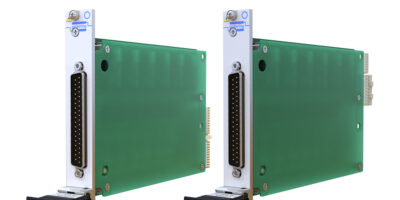PXI multi-cell battery simulator modules simplify readback for battery validation
Battery simulator modules, suitable for electric vehicle (EV) battery stack emulation in battery management systems (BMS) test applications are available from Pickering Interfaces. The 41-752A (PXI) and 43-752A (PXIe) modules enable direct voltage and current readback either programmatically or using Pickering’s soft panel control. Each cell simulator is accurate to ±5 mV from 1.0 to 7.0V.
In addition to automotive and EV use, the modules are suitable for aerospace, energy storage and electric aircraft applications. The battery simulator modules occupy a single PXI slot. They are available with two, four or six battery cell simulators per module that are fully isolated from ground and from each other. This allows series connection to simulate batteries in a stacked architecture. The 750V isolation barrier allows the modules to be used to simulate lower power battery stacks that are commonly used for vehicle propulsion. Battery charging emulation is available up to 100mA.
Each cell provides independent power and sense connections, allowing the simulator to sense a remote load and correct for wiring losses. The battery simulator is designed to respond to dynamic loads, minimising the need for local decoupling capacitors at the load. The module can also independently read the voltage at the load (via sense lines) and output current for each cell. When supplied with I/V readback, the driver can automatically adjust the module’s output voltage through a feedback system, to increase accuracy.
Pickering’s simulation product manager, Paul Bovingdon, explained: “With the increasing adoption of EVs as well as battery stacks for other applications, one of the significant challenges to be tackled is the effective testing and validation of the BMS. Previously, test engineers have had to link simulation modules to a separate DMM to achieve voltage and current readback”. The 41-752A and 43-752A modules can be combined with Pickering’s other PXI switch and simulation modules, including high voltage switching, fault insertion, thermocouple simulation and RTD simulation. They can also be combined with other vendors’ PXI modules, such as a CANbus interface, to create a flexible BMS test system, added Bovingdon.
Pickering provides software support for all its products. This allows users to design applications with the operating system and programming languages of their choice – e.g., C/C++, .NET, Python, LabVIEW/LabWindows, MATLAB, for ease of integration into new or existing systems. Users can choose between all Microsoft-supported Windows versions, all popular varieties of Linux and other hardware-in-the-loop (HIL) operating systems such as VeriStand, LabVIEW RT and QNX.




